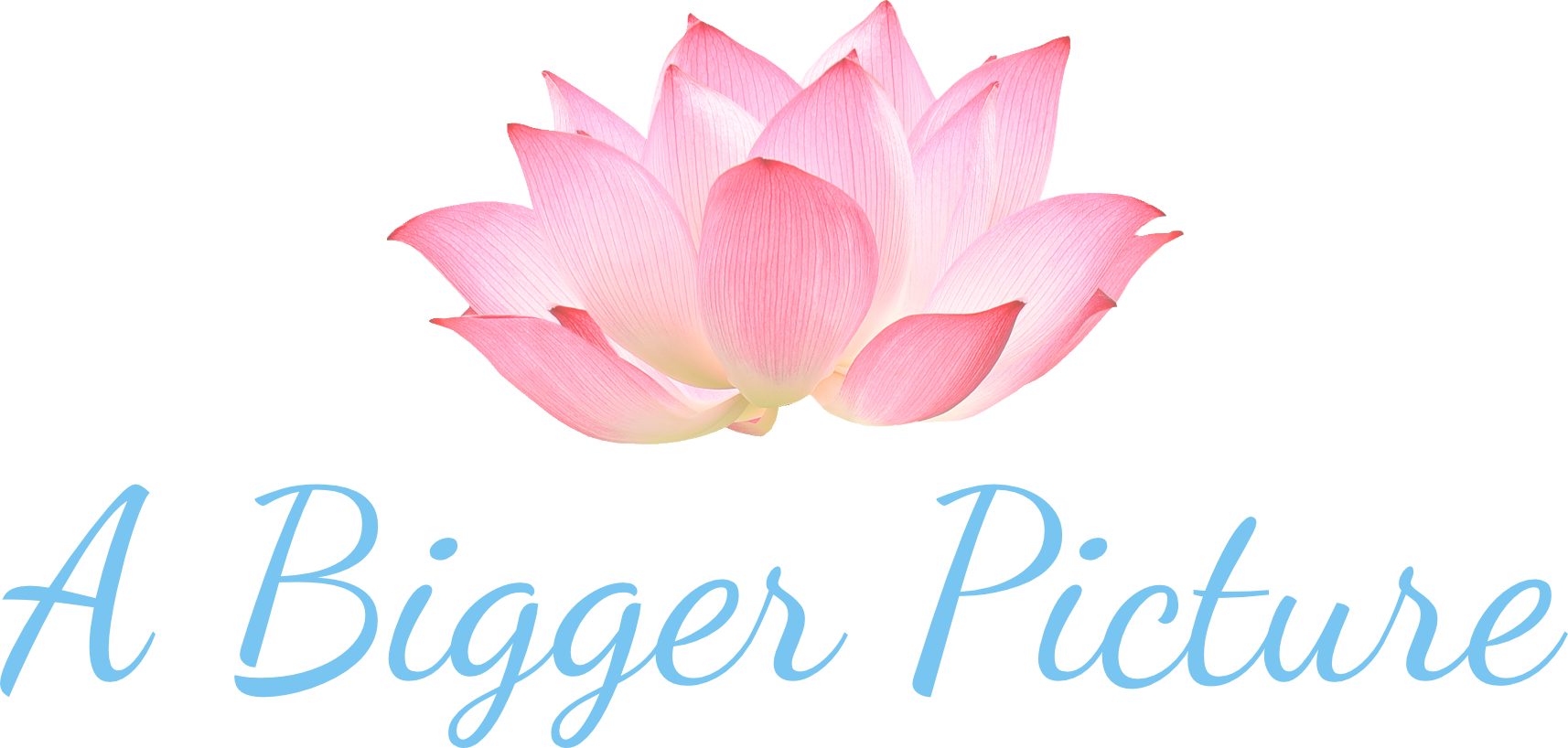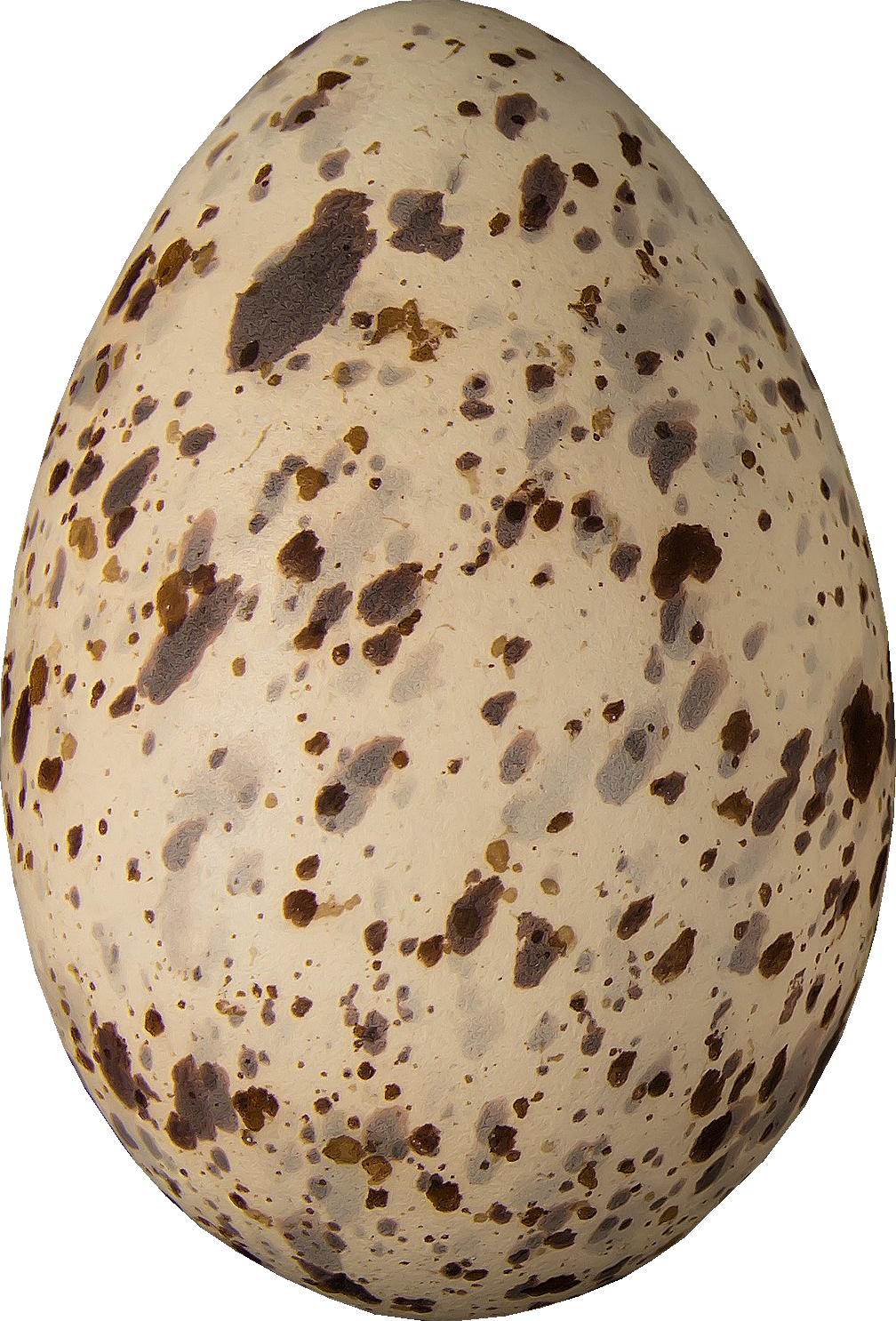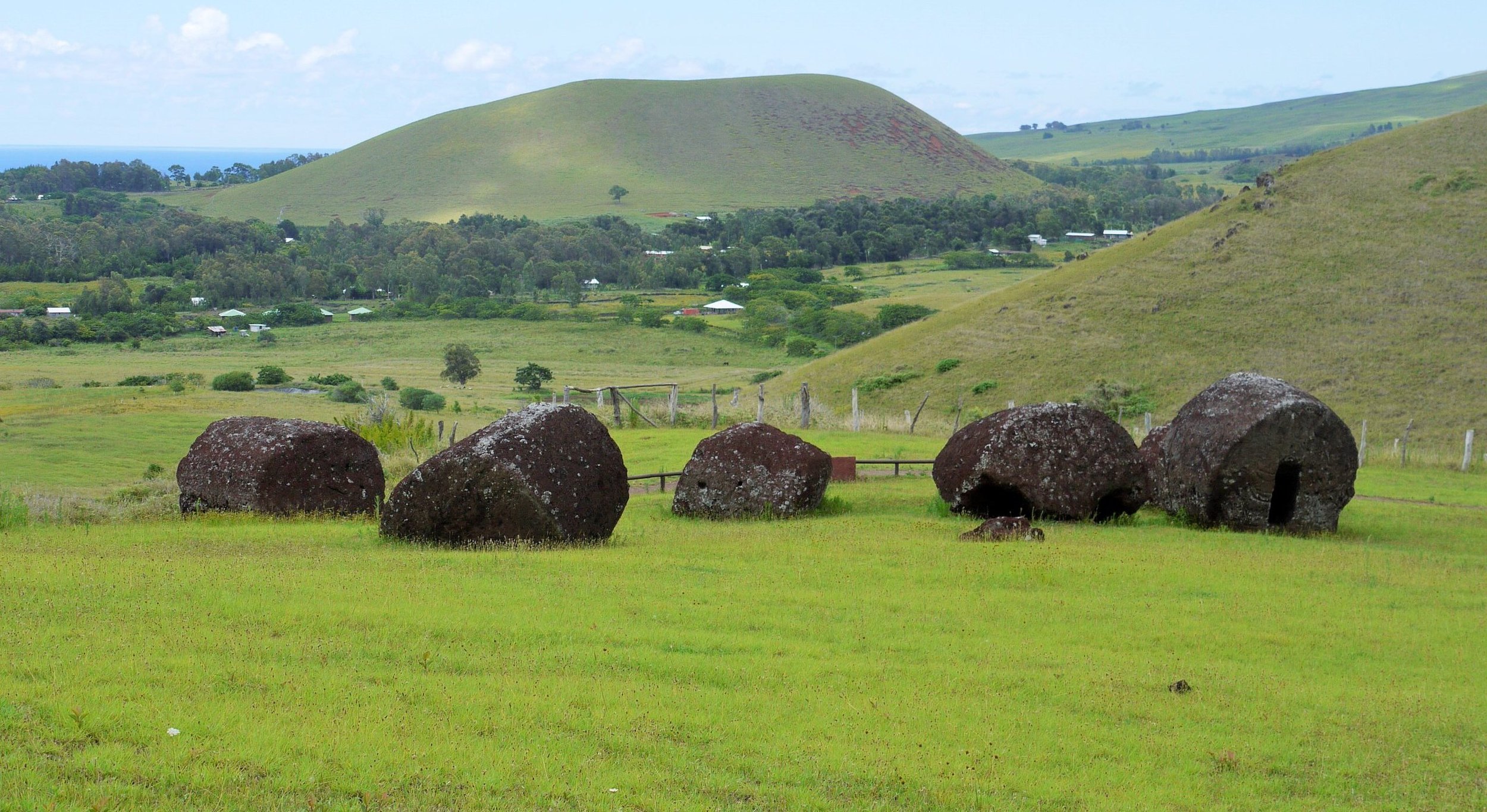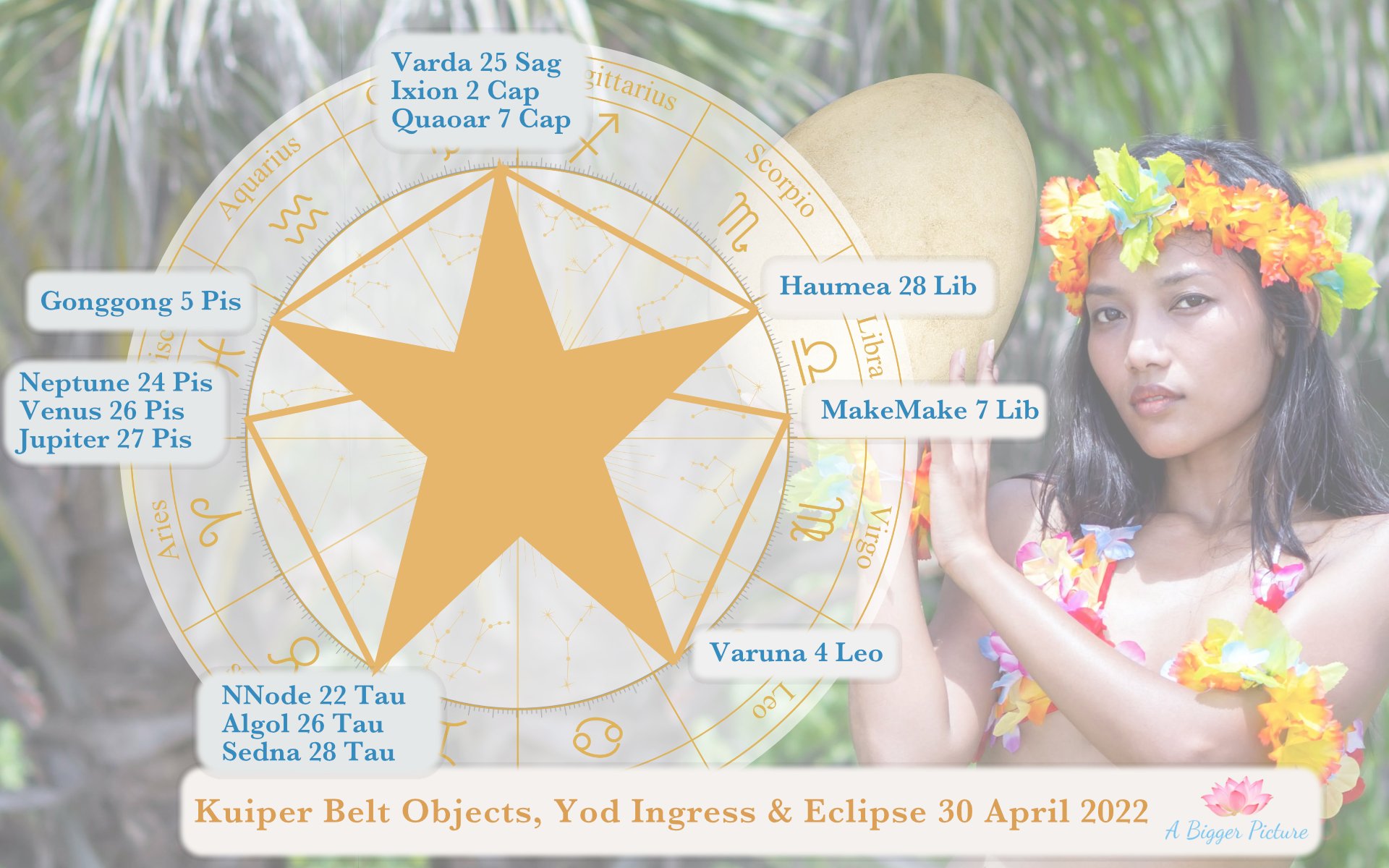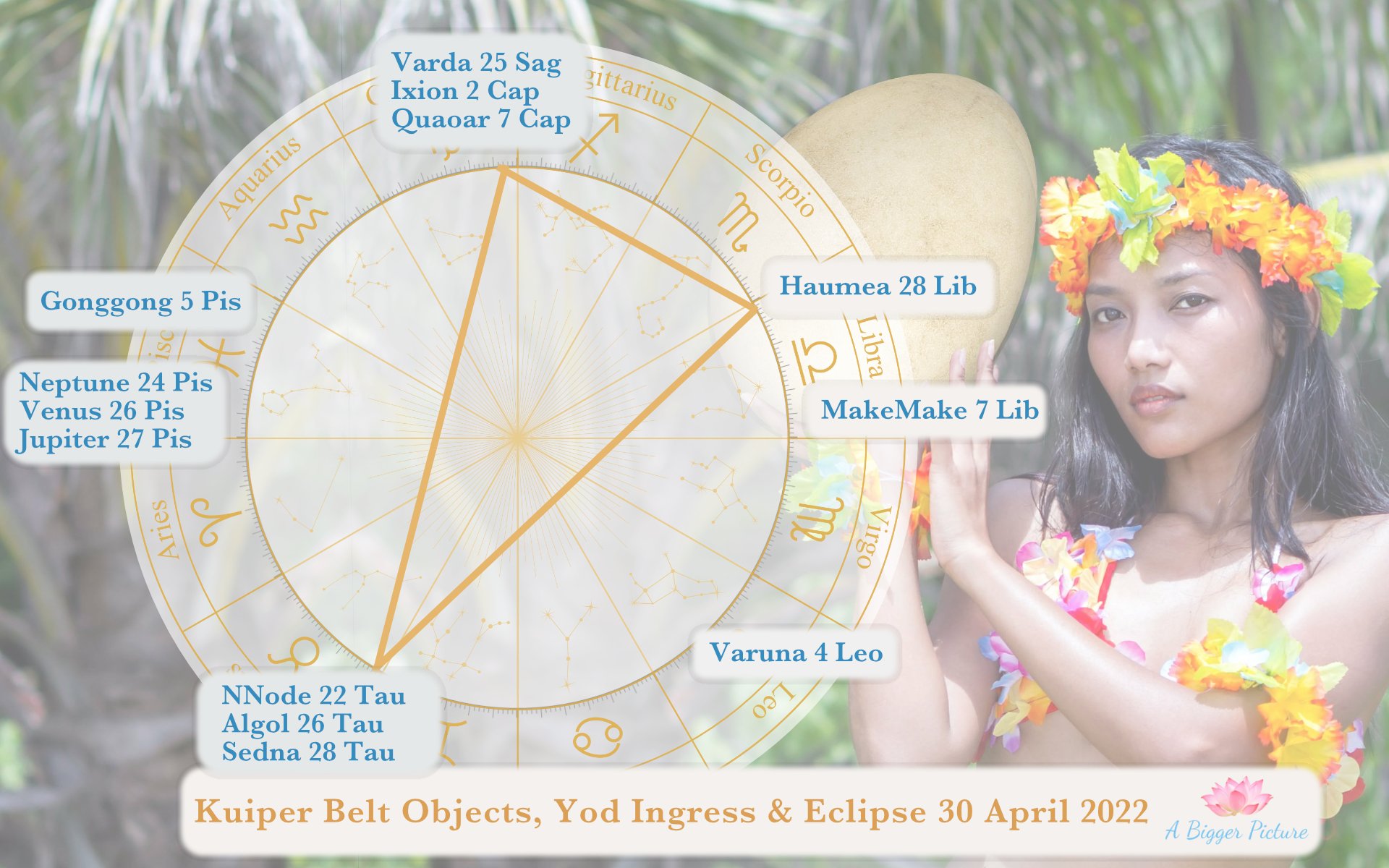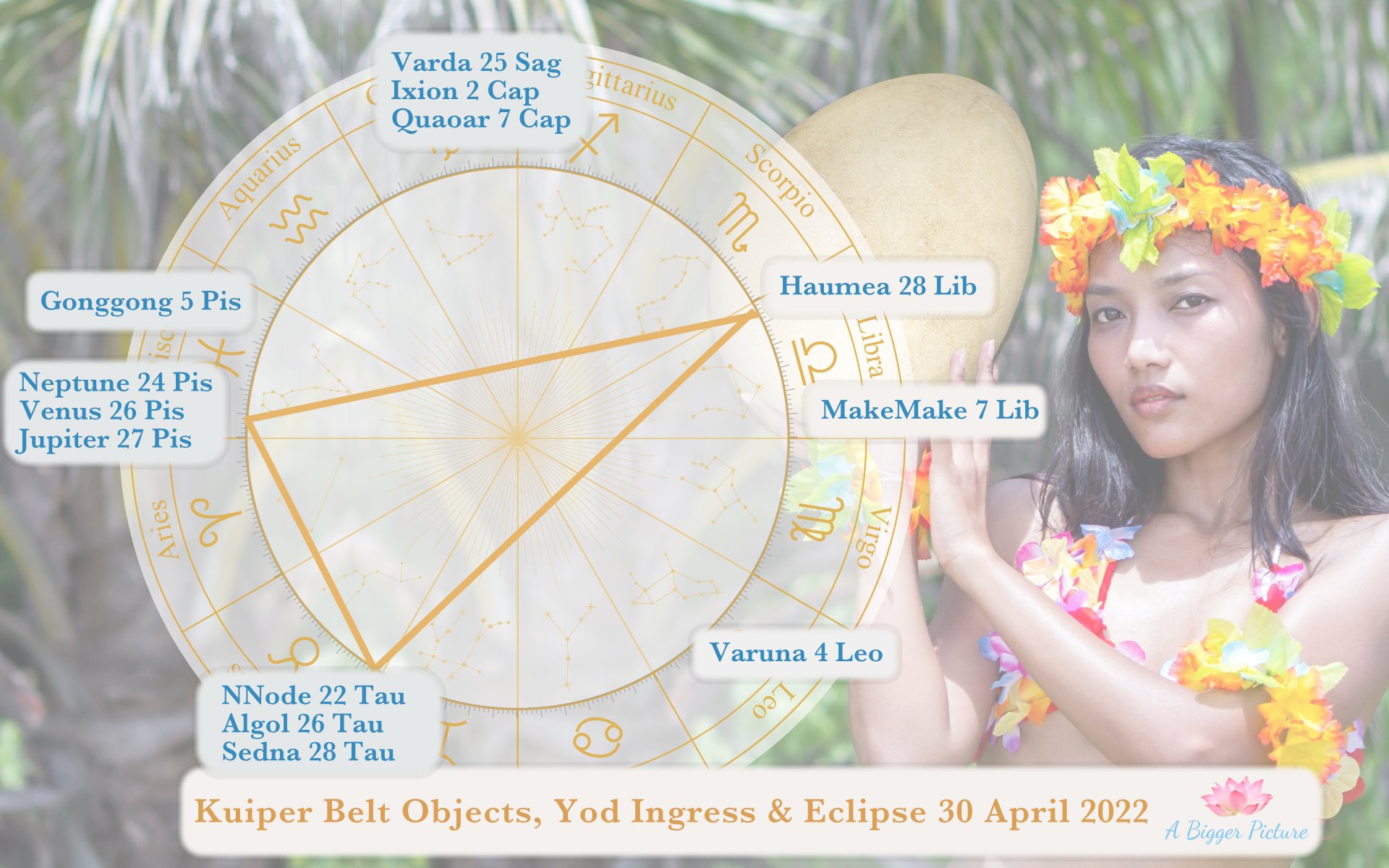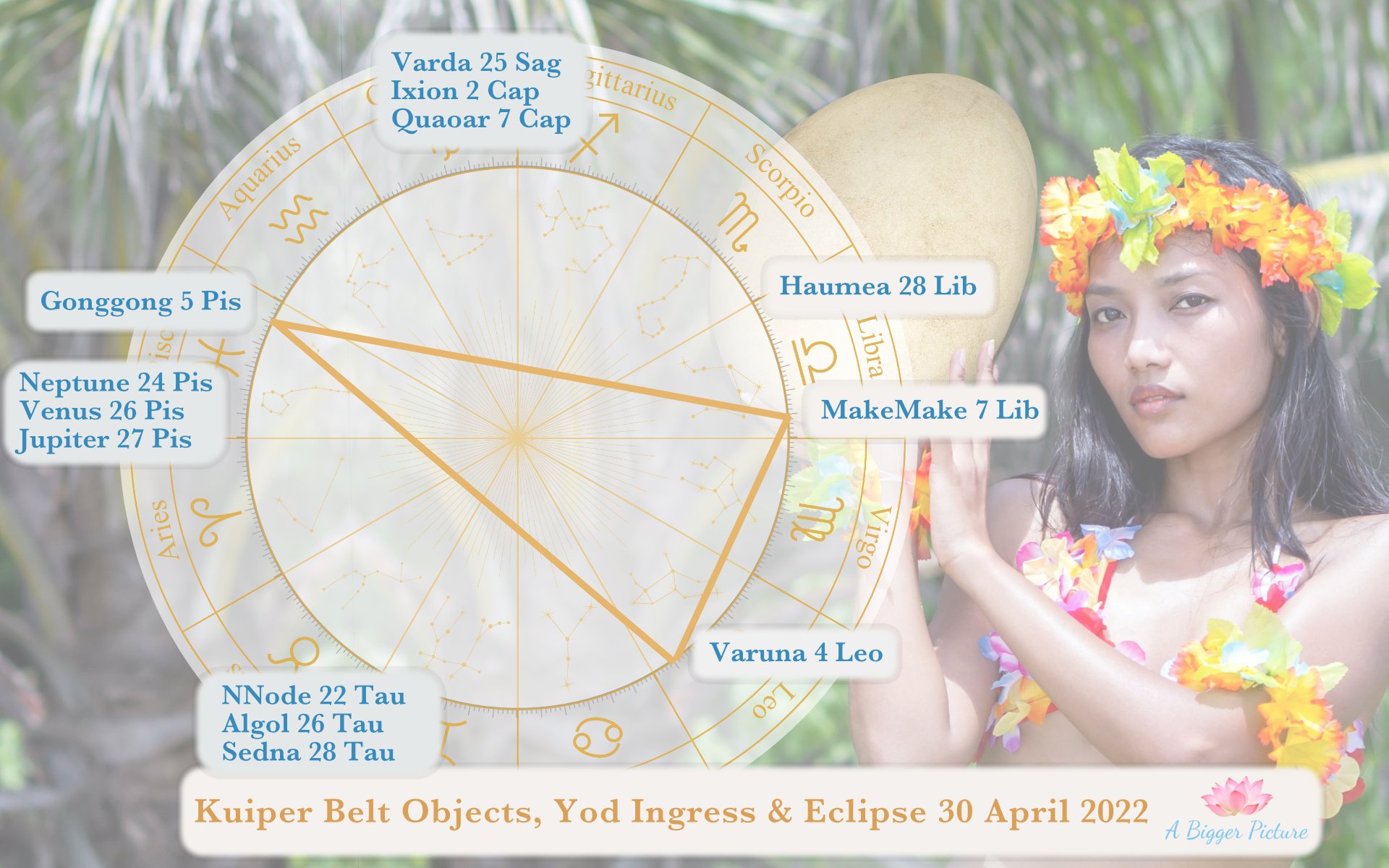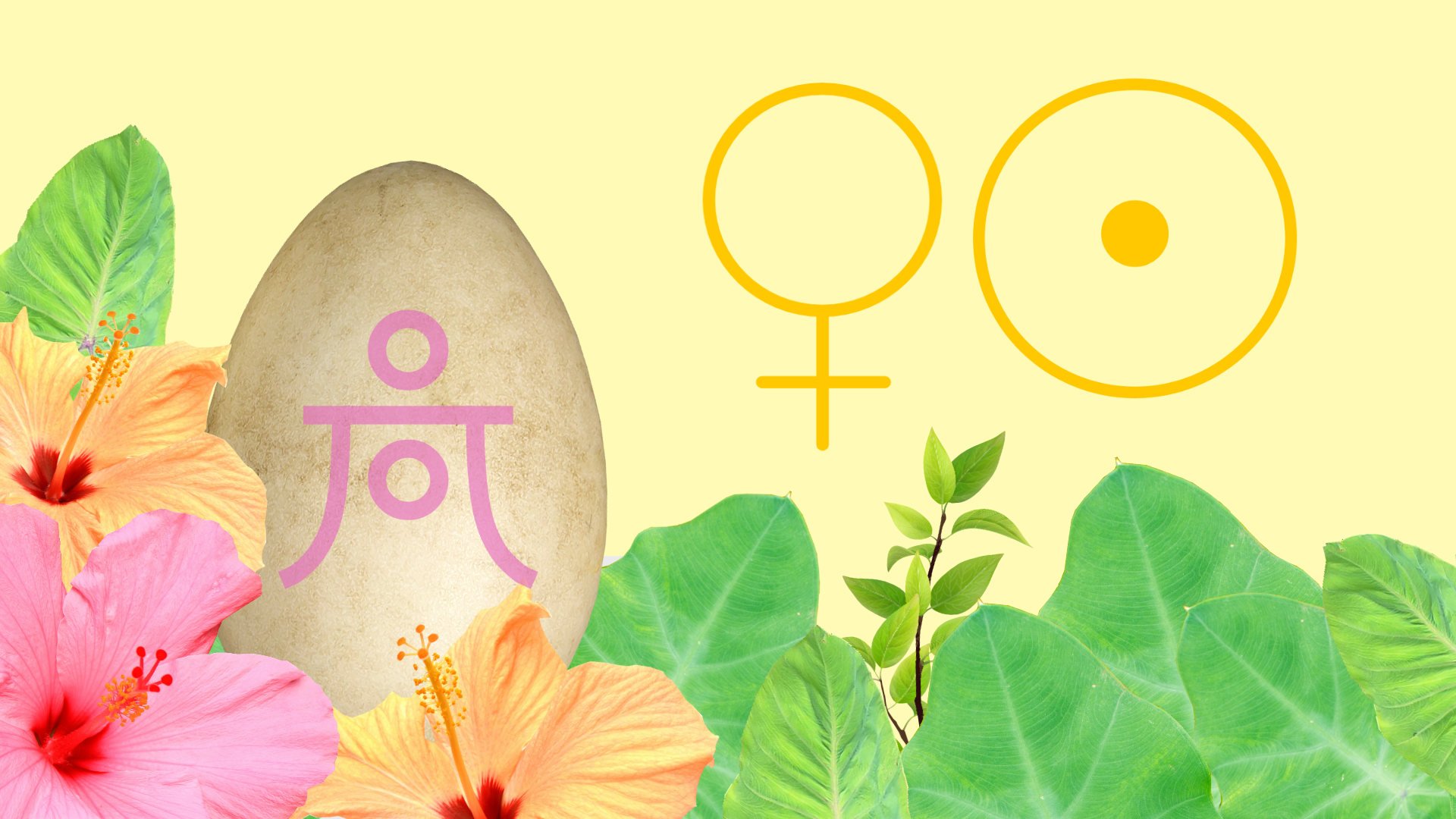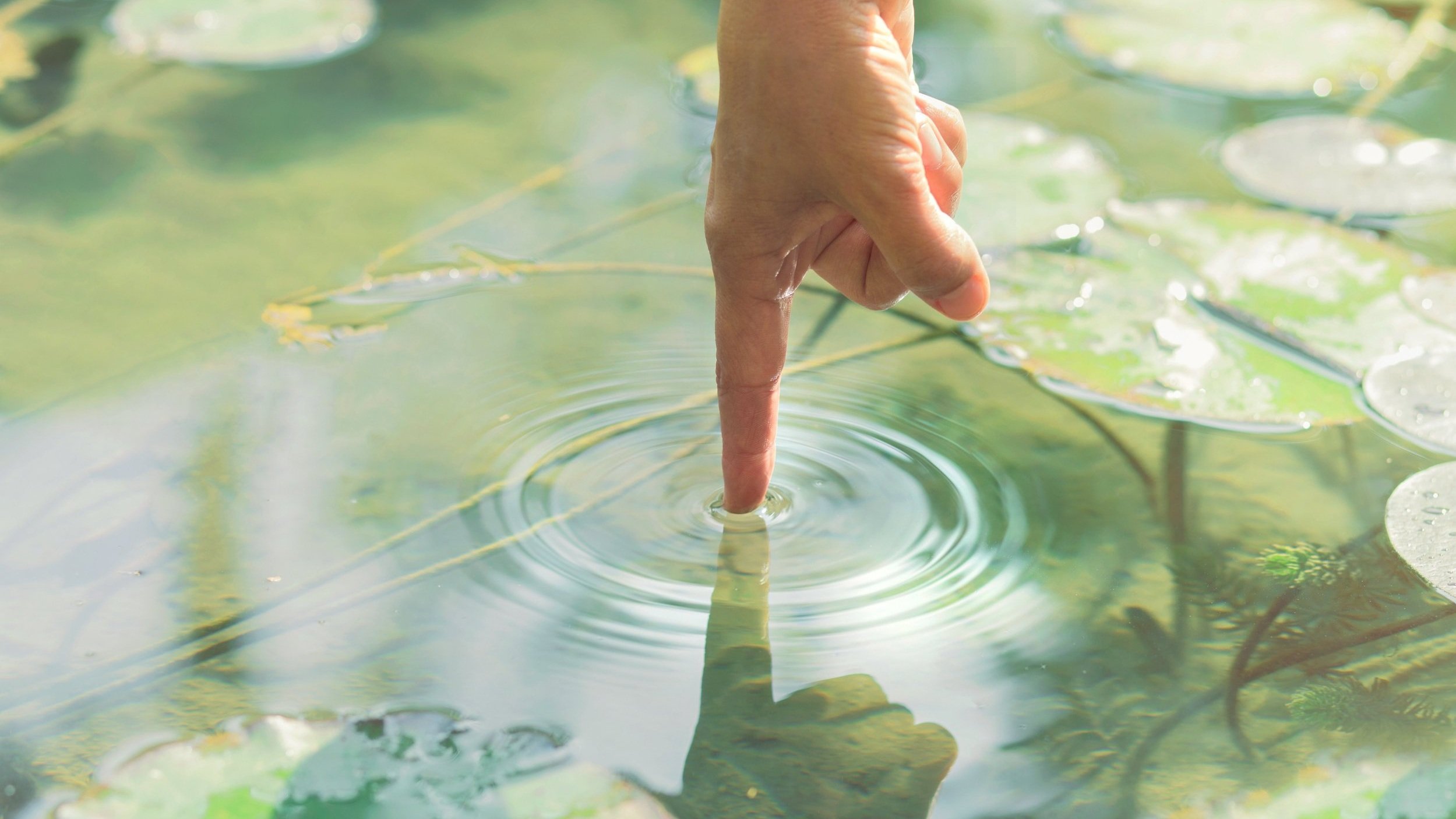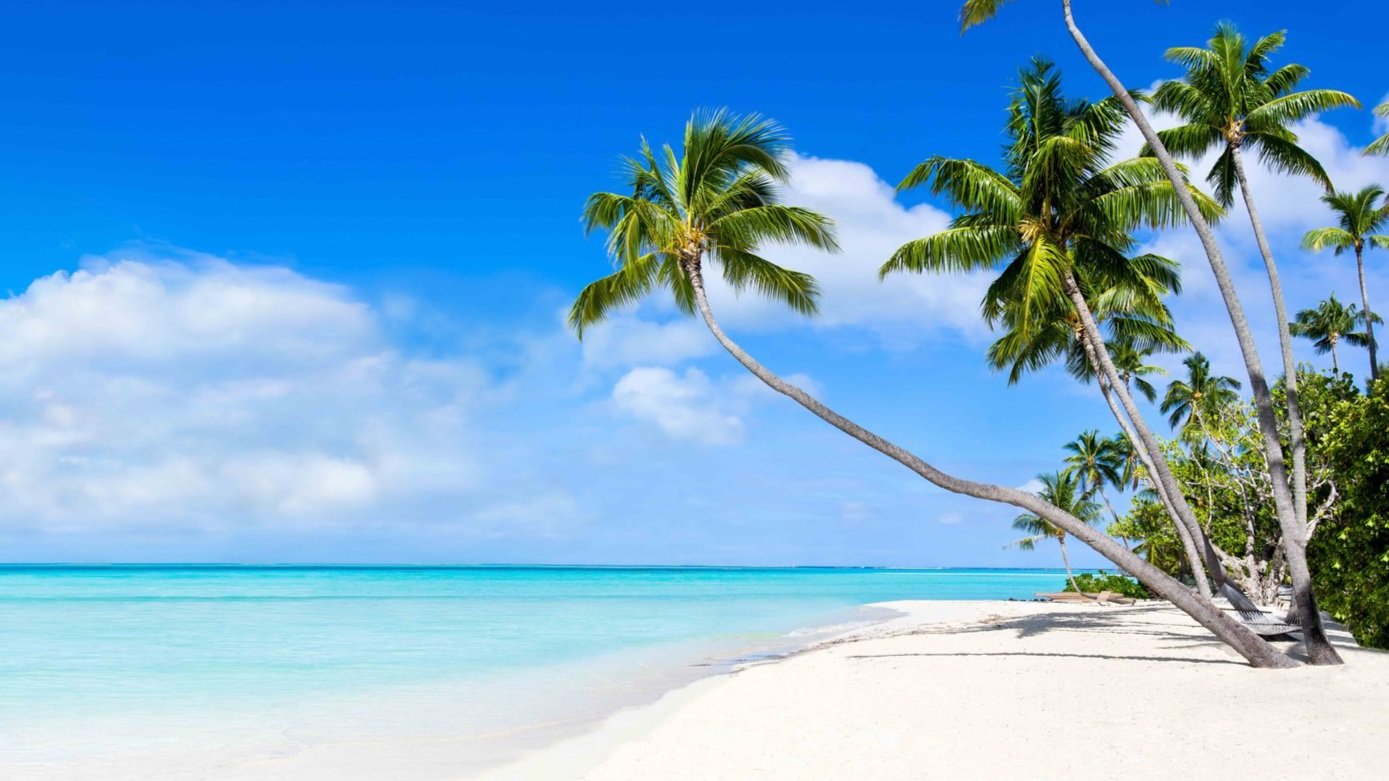Discovery Chart of MakeMake of the Rapa Nui Easter Island in Astrology Part 2
This is part two about Rapa Nui, also called Easter Island, and its male god MakeMake who presided over the birds that he influenced to nest on the small islet of Moto Nui. For the first laid egg found and brought back to Orongo, entails massive social influence and multiple benefits for the group leader and his community.
Easter Island is a survival story of dwindling resources, cultural resilience and self-determination.
The astrology of Makemake is related to understanding the need for preservation of the natural world, a connection to environmental wisdom, and to the activism and leadership associated with defending natural ecosystems. It is the need to understand being in right relationship with nature and other people, and taking right action for the benefit of everyone.
It is about being in the natural flow of one’s own divine energy, and the concept of natural law; that each human being need to find integrity and moral compass within themselves first, before they can be in leadership of their brethren.
A previous article shows that in the natal charts of famous naturalists, Haumea is strong in those with a profound love for nature, where MakeMake is often prominent in the natal charts of leading environmental activists. MakeMake is also about how competitiveness for resources, wrong investments, leading people astray, eggs in the wrong basket, and ignorance can escalate.
MakeMake’s Rapa Nui island’s climate changed, due to human mismanagement of fertile natural resources.
Fertility is a highly important concept in ancient sea-fairing Polynesian culture, that is perhaps most important in the mythology, of MakeMake (pronounced MakeiMakei).
Rapa Nui culture of the time, before near total societal/environmental collapse, worshipped MakeMake, the birdman spirit, which has strong connections to the Hawaiian stories of Haumea, who had a magical stick called the makalei, which is symbolic of providing food abundantly, from nature’s natural capital and wealth. In Hawaii, nature is lush, green and provides abundantly, however, Rapa Nui island’s climate changed due to human activities, which meant that nutrient-dense foods like the egg, became paramount for fertility, on multiple levels. In it’s discovery chart, MakeMake at 20 degrees Virgo squares Pluto in Sagittarius, but more importantly is part of two Yods. The first is MakeMake sextile Saturn making a yod apex on Neptune within 3 degree orb, and Eris in Aries sextile Neptune making a yod apex on MakeMake. Yods are extremely potent and unpredictable energies, and together these yods speak of great illusions (Neptune), and win at all cost battles for control (Eris) and leadership (Saturn), that activate on the apex points.
Please remember that the following is for the PRIMARY goal of research and study of dwarf planet MakeMake.
If your primary goal is NOT to understand the astrological energies of object MakeMake, this article may not be for you. Learn about the ethics and integrity of this work here.
Venus in the Heart of the Sun at a Sun/Venus Superior Conjunction
Part 1 of this article looked at the Venus Sun superior conjunction in the discovery chart, but now let’s look at the potential manifestation of Venus’ qualities being eclipsed by the Sun.
Considering the points below, it becomes quite obvious why MakeMake’s discovery chart was linked to what happened (or what people think happened) at Rapa Nui by the astronomers who name these newly discovered objects.
From an astrological point of view, it has been observed, that when the energy of Venus is eclipsed - in a superior conjunction in particular - this means that people become disconnected from her energy, which entails feeling disconnected in relationship, needing to have their own space, ghosting others, going silent on social activities, etc. On a small island with little vegetation towards the end, life perhaps became just too much challenging with this energy…
If the reader doesn’t understand why these comparisons are made, read part1. In ancient mythology, as Venus steps into the heart of the Sun, she is described as entering into the underworld. This is marks the time period that she cannot be seen in the sky and once she moves out from the Sun’s rays and back into view she is reborn as the evening star. Multiple other articles on this website, have remarked on this cycle of Venus, reflected in the stories of Persephone, and also Inanna’s descent into the Underworld. In this myth they embark on a heroine’s journey, where they experience trials, ordeals, and even a psychological death of the old, before being reborn anew. This is the spiritual rite of passage and rebirth. Just as Venus/Persephone/Inanna descended into the underworld in order to be born anew, so too the energy of MakeMake calls us into the depths of ourselves to shed what no longer serves us and find integration and wholeness.
Qualities of Venus
values
adoration
relationship
finances
material possessions
courtship
personal taste
aesthetics
love and having a heart
Anti-Venus Qualities
lack of values, no value system, chaos
no regard for others
no interest in relationship, abandonment, ghosting, use and abuse dynamic
poverty, greed, selfishness
greed, stealing, pillaging, piracy
no regard for the finer details of courtship, instead being entitled
having no refinement whatsoever
not having the ability to appreciate beauty, or its worth
having no heart or feeling for another
Venus Descends into the Underworld
In ancient mythology, as Venus steps into the cazimi (heart of the Sun) she is described as entering into the underworld. This is marks the time period that she cannot be seen in the sky and once she moves out from the Sun’s rays and back into view she is reborn as the evening star. Multiple other articles on this website, have remarked this cycle of Venus reflected in the stories of Persephone, and also Inanna’s descent into the Underworld. In this myth they embark on a heroine’s journey, where they experience trials, ordeals, and even a psychological/metaphysical death before being reborn anew. This is the spiritual rite of passage and rebirth. Just as Venus/Persephone/Inanna descended into the underworld in order to be born anew, so too the energy of MakeMake calls us into the depths of ourselves to shed what no longer serves us and find integration and wholeness.
This part of the Venus cycle is a coming into maturity. In Western astrology, the qualities of Venus is generally seen in a highly positive light, as the planet of love and romance. The effects of her visit to the underworld, and the resultant change into a more mature state, is not brought to light often enough though. There is certainly a level of denial in our western paradigm.
Ancient civilisations, like the Mesopotamians and Babylonians had a different take on Venus’ character, through the goddess Inanna, later worshipped as Ishtar. Inanna was an ancient Mesopotamian goddess associated with love, beauty, fertility, sex, war, justice and political power. She was the “Queen of the Heaven”, and associated with the planet Venus. According to Wikipedia, the Greek mythological equivalent of Inanna are Aphrodite and Athena, and the Roman equivalent are Venus and Minerva.
In the Venus cycle, ancient civilisations saw her expression, before she entered the underworld, as a more fiery IMMATURE expression, which is why many referred to her as the war-god star, when in that stage. Then Venus dipped below the horizon for 8 days to enter the underworld. And after her stay there, they viewed her expression different, as rising as a more MATURE version. There are many ancient resurrection stories like this, that involves a transition from one state, into another, around Venus. (Even the ancient Mayans had such a mythology). There was an ambition that Inanna had, to conquer both the light and dark domains, to gain wisdom like Enki did… that in the ancient days, were associated with Venus. Venus is a very red planet,
like Mars… but there seems some rose-coloured glasses when it comes to her energy in western astrology. The only times when fiery attributes are assigned to her, is when - in relation - she is influenced by being in a fire sign, or aspecting a fiery planet. Why is that? Denial is not a river in Egypt.
The painful incidents in our lives may teach us about our own Divine nature. Personal loss or suffering has a way of helping us individually set our own personal code of ethical conduct straight, if individuals allow it to be a teaching tool for wisdom. One’s anger may be of benefit or harm, depending on the choices an individual makes.
Two Hammer of Thor Aspect Patterns in the Discovery Chart
Another article in the MakeMake blog explores two hammer of Thor aspect patterns in MakeMake’s discovery chart. Eris conjunct the North Node and asteroid Persephone in Aries squares Saturn in Cancer and makes a Hammer of Thor apex on trans-Neptunian object Varda, which is a hammering on the aspects that brings light and hope to those in darkness. This hammering from Eris square Saturn speaks of the massive pressure that leads to the silencing of guiding light and hope, under the pressure of the stark situation. Persephone is an Underworld figure feminine energy that is about detox, hope and rebirth, from disempowerment, into empowerment and autonomy, and the significance as conjunct to Eris, is a long story for another day… The Varda apex in the first house points to the fallacies of putting all their hope onto one person, or all their eggs into one basket, and being massively disappointed in the scheme. Both Eris and Saturn entail energies in competition for the top spot, and this tension finding release on Varda entails the snuffing out, of a light of hope.
In addition, Varda squares Uranus and makes a Hammer of Thor apex on Saturn and Kassandra, may also be seen as a rite of passage into maturity, like the missing Venusian energy. The square brings massive tension between finding light and divine insight, and actually listening to good advice instead of ignoring it, to stubborn, set in his ways Saturn in Cancer. This tension takes place in the house of shared resources (8th) and deals with how we obtain NOURISHMENT; wether it is the food that deeply satisfies the body’s nutritional needs, or the drive to find the divine ‘golden treasures’ within, for true divine insight, to make right choices that is in everyone’s best interest, instead of an immature, short-sighted abuse of power display, that puts egg on their face.
Geography and Isolation of Easter Island:
It is easy to see why Rapa Nui was severely challenged in terms of resources… One glance of the map below says a lot…
There is a lack of mountain ranges, to stretch either around the east or west of the island, to be able to catch water saturated clouds, to release their content into a ravine, to saturate the soil . Even though there are craters, like the Ranu Kau that had steep cliffs to help create cloud catchment for water and generate fertile soil, this very small area was hardly suitable for food cultivation. The area is just too small and lacking to support diverse ecosystems. As the map shows, Easter Island is a small remote island far off the coast of South America, at the 27 degrees latitude south of the equator.
The islands of Hawaii are in the northern hemisphere, and at 20 degrees north of the equator but they have steep mountain ranges, and many fresh water springs that generate life inland, and they can replenish animal life via the other islands, or what gets washed up on their shores via the currents of the ocean. There are significant and complex issues at hand for Easter Island… According to a book excerpt by Peter H. Buck, Vikings of the Pacific, University of Chicago Press, 1938. pp. 228-236, Easter Island is 1,100 miles from Pitcairn, and 2,030 miles from South America. Its greatest length is thirteen miles and its area is sixty-seven square miles. It is a volcanic island with a dry, arid soil, no streams, and but slight rainfall. Of a number of extinct craters, Rano Aroi rises to a height of 6oo feet. To be successful and thriving on such an island, would be a unique task, let alone deal with all the troubles that the passings ships brought.
Being confined to an island double the size of Manhattan, where agriculture and fishing were the only means of survival, meant that droughts had the potential to completely eradicate Rapa Nui's livelihoods. The history of the Rapa Nui is divided basically into three periods: the moai carving era, the Birdman Cult era and the colonization/modern era, which are described in part 1 as it relates to the astrological understanding of dwarf planet MakeMake.
The preoccupation with carving moai statues, ended up taking a toll on the limited natural resources of the tiny island, so, by the late 1500’s, the moais were ignored in order to make way for a new tradition: The Birdman Cult.
The goal was fertility, but this has multiple interpretations and meanings that need to be understood…
MakeMake Prankster and April Fool’s Day
MakeMake was discovered on 31 March 2005, however, this translates to April Fools day in universal time. April Fool’s day is about practical jokes, hoaxes, jokesters and playing harmless pranks upon one’s neighbour, but upon looking at MakeMake’s mythology towards the end before societal/ecological collapse, and the discovery chart, it becomes clear that this smiling in another’s face to prank them is no harmless, innocent game; it is cut-throat and entirely deliberate, and the far-reaching consequences and stakes are very high.
Sabian Symbol for MakeMake
A Girl’s Basketball Team - 21 Virgo
“Receptivity to collective forces.”
This Sabian Symbol for MakeMake in its own discovery chart at 20 degrees Virgo, fits beautifully with the stories discussed in Part 1 of this article. This Sabian symbol is much like a birds-eye view, regarding what all the jostling and scuffling is about on Rapa Nui, a tiny, isolated island in the middle of the ocean. Fortunately, multiple astrologers have information and their unique interpretation on this symbol, for free on the internet. Thanks to them, we can gain great Bigger Picture insight on MakeMake and the birdman tradition.
Astrologer James Burgess writes that this symbol is about receptivity to collective forces. It’s about putting aside competitive, individual goals, so we can tune into higher forces that focus on the bigger picture and collective aspirations.
"There are real and important limits on our willingness to get involved with projects and people. Basically, unless we find something of vital consequence to ourselves, it is hard to serve another’s ambitions."
The Sabian symbol is an illustration of the effort of one girl, who is invested in the team effort - with her team mates - to win the game. They are looking toward cooperation, with the use of their unique talents and skill sets, implementing constant self-refinement, for shared rewards. They corroborate and if there are course corrections to be made, for a better outcome, they each readily adapt to change. Personal limitations are overcome by group effort. The team is also working on behalf of a community who support them, celebrates them, and appreciates them. The individual, being part of the basketball team, makes us consider that we are part of something bigger, that are also spiritually appropriate.
As the groups and leaders annually watched from the crater’s edge for a sign from the islet that an egg was found, there are celebrations and festivities. For months prior to the event, warriors had practised their athletic skills, seers prophesied over who should be sent to represent a group, and priests chanted and prayed for their group warrior to discover the first egg.
Sabian symbol expert Blain Bovee also writes that in Virgo 21 degrees, there is the detail factor regarding abilities to be refined, to be keenly oriented to minutia, and to have a potential for nitpicking. In part 1, there is plenty of examples how the birdman competition was initially fairer, due to a more level playing field, but as the winning team relished in the privileges, they changed the rules, or would disqualify opposition from even competing. Some times one team would be in power for many years. This triggered massive tribal rivalry and fighting to the point where the Birdman competition declined and ended.
This Sabian symbol is about people teaming up, banding together, and working together for a common goal.
There is supposed to be give and take, and taking responsibility for fulfilling one’s role that is clearly visible, with the t-square in the discovery chart putting pressure on Saturn in Cancer in the 8th house. In organised teamwork with rules to follow, everyone has their place and needs to work together. A disorganised arrangement just won't work by design, nor will being all over the place, or merely working alone. Putting a team of ‘good eggs’ together is a challenge, because the sport is competitive, and everyone will be tempted at some point in their life, to make sure that another don’t succeed; to trip them up…
Clearly the privileges that came from being Birdman, meant a great deal to the leader and the clan. The competition was fierce, and in the end they all lost sight of what was most important, as they scrambled like crabs in a bucket. Ultimately, there was no joy in playing the game left, because the privileges were so delightful, and being the loser meant being disadvantaged; emaciated, and slowing turning into skull and bones. The Birdman contest might have been a more efficient ballot of who gets to make the rules, had it not been for scarce resources, and a lot of greed for the title, and the dire need to feel nutritionally satisfied, and have fertility…
The Egg, the Flop, and the Shenanigans of Maintaining the Status Quo
According to this website, an idiom is a word, group of words, or phrase that has a figurative meaning that is not easily deduced from its literal definition, like ‘spill the beans’, or ‘barking up the wrong tree’. ‘To lay an egg’ means to fail, to produce a humiliating flop. The expression lay an egg may have its roots in British cricket in the 1860s, when a score of zero became known as a ‘duck egg’. The American slang for a score of zero is a ‘goose egg’. The current meaning of the idiom lay an egg began in the late 1800s in American vaudeville, to mean a show that was unsuccessful or an act that the audience didn’t like. In the 1920s, the term came to mean any failure or humiliating flop.
To understand why this expression is compared to the birdman contest, the reader has to remember that towards the end of the tradition, all manner of ridiculous shenanigans were employed to keep the status quo in place; including ensuring that one winner never looses.
This was not only an injustice, but an immense humiliation for the other warriors, that likely festered in them. If you understand the nature of Eris energy (which is conjunct the North Node in Aries, as part of a t-square to Saturn in Cancer) you will know that immense anger, spite, vindictiveness, and envy likely built up on the island. It is sadistic, conflict-loving, stress-inducing behaviour, and back-biting culture. See this article to understand the energy combination of Eris/Saturn. There is potential for this to be one of the biggest contributing factors to the decline of Rapa Nui society at the time. Eggs are highly valuable, but when you ‘lay an egg’ in front of an audience year after year, there is a sourness that grows in the heart, that can escalate into deep bitterness and vengeance, resulting in a ‘rotten egg’. How can you put a ‘nest egg’ away, in a society that is competitively running itself into the ground? Some people are ‘hard eggs’ to crack, they just don’t see the benefit of managing resources wisely, when there are spoils to be enjoyed. This is how you get a ‘chicken and egg problem’, where nobody knows what caused the problems and what needs to be done to fix them. Where they keep ‘killing the goose that lays the golden egg’ until nobody had anything, resulting in an entire island ‘having egg on their face’…
Vertex, The Nodes, and Fatedness
The Vertex in Astrology is not a planet or an asteroid, but a special point that predictive astrologers often use, that’s quite telling when it comes to matters of fate, and a bird’s eye view. When the Vertex is activated in a person's birth chart, it activates something that tends to be out of our hands.
The vertex is considered one of those points in our charts signalling events that happen to us through no effort, or will of our own. It’s like a sensitive karmic reset button, that gets powerfully activated, and all we can do is allow it to unfold. In MakeMake’s discovery chart, the Vertex falls smack bang on Saturn. Saturn is also in a tight square to the Nodes and Eris…What happened in Rapa Nui at the time of the birdman tradition has many elements of a recipe for failure, almost right from the beginning. Saturn (providing) in Cancer (nourishment)
in the 8th house (shared resources) conjunct the Vertex, and square the Nodes, entails anything unpredictable frequently happening in this arena of life.
From an astrological point of view, it’s as if the writing was on the wall from the beginning, because there was only so much room for expansion, and with Polynesians and other cultures being such prolific travellers, it was only a manner of time before humanity all collided and jostled for resources on this tiny island, very far away from other land. The circumstances that they had to contend with, was so unique, that it brought the worst out in the humanity there. They were so intimately connected with each other, their own insecurities (Eris) and fears (Saturn), that it wiped them out.
This is perhaps why the fertility of the egg is worshipped, because with an egg, you can get through one more day… or perhaps allow the bird to grow, to lay more eggs, to cater for a rainy day…
The Worth of the Birds of Luck and the Hunt for Fertility
According to a book excerpt by Peter H. Buck, Vikings of the Pacific, University of Chicago Press, 1938. pp. 228-236, the fowl, which was the only domestic animal known in Easter Island, may have come from the Marquesas (Polynesian islands to the north east) where it was present. Because it was the only domestic animal, the fowl received more attention and honour than in any other part of Polynesia.
Fowls became the mark of wealth, and festivals were characterised by gifts and distributions of fowls. In order to protect them from thieves, fowl houses of piled stones were erected to house them at night.
Stones were piled up against the entrance and the sound of stones being moved served as an alarm to the owner. Skulls with incised carvings, imbued with power by Makemake, were placed in the fowl house to promote the egg-laying capacity of the occupants. There are multiple pictures of the fowl houses, along with the MakeMake artwork at the entrance for protection, on WikiMedia Commons.
It may seem a long call from the domestic fowl to the seabird, the sooty tern, but both are birds and lay very, valuable nutrient-dense eggs.
The following is a quote from the book, which was so beautifully written, that it had to be included exactly as it is:
“The sooty tern (manu tara) comes to breed in large numbers in July or August off the southwestern point formed by the crater of Rano-kao on three rocky islets, of which the only one accessible to swimmers is Motu-nui. What commenced as an ordinary food quest for eggs became an annual competition to obtain the first egg of the season. The warriors (matatoa) of the dominant tribe entered servants for the annual Derby, and members of defeated tribes were not allowed to take part in the competition. The selected servants swam over to Motu-nui and waited in caves for the migration of the birds. The warriors and their families assembled on the lip of Rano-kao that overlooked the course. Owing to the strong wind, they built houses of stone for shelter at the village named Orongo, the Place-of-listening. There they listened for the coming of the birds and waited for the call of the successful servant who found the first egg. While waiting they amused themselves with singing and feasting and carved on the adjacent rock figures with birds' heads and human bodies, the symbol of Makemake, god of fowls and sea-birds. In time, rules and ritual were developed about this annual competition which became the most important social event on the island. The successful servant leaped onto a rocky promontory and shouted across the water to his master, 'Shave your head. The egg is yours.'“
“A sentry on watch in a cave below Orongo, termed the Bird-listener (Hakaronga-manu), heard the call and relayed the message up to the waiting masters.”
“The successful master was termed the Bird-man (Tangata-manu). On reception of the egg, the people escorted him to Mataveri, where a feast was held in his honour. After that he went into seclusion for a year in a house at Rano-raraku. The details of his functions and privileges are not known, but certain it is that he was held in high honour and provided with food by the people until the next annual Derby took place. The list of Bird-men was memorised and transmitted like a line of kings. The bird cult is not known elsewhere in Polynesia and is clearly a local development arising out of peculiar local conditions. The importance of the fowl as the sole domesticated animal, the annual migration of the sooty tern to a near-by islet to breed, the village of Orongo with its carved rocks overlooking the course, and the development of the bird cult are all in a natural sequence that could have occurred nowhere else but on Easter Island.”
Ancient Cultures, Access to Nutrient-Dense Foods, Fertility, and Procreation
If books by scientists and researchers are to go by, it would seem that they don’t have a good grasp on the reasons why the Rapa Nui people lived and acted in the way they did before social collapse, when it comes to their spirituality, their ceremonies, rituals and especially the Birdman contest. Here is another point of view, that may be useful to some, but not everyone…
Today, the Weston A. Price Foundation in the USA teaches the importance of particular nutrient-dense foods, and the impact that they have on human fertility, and the ability to bear and raise, healthy children.
According to the research of Sally Fallon Morell, many ancient cultures knew what to eat, to have healthy babies, and according to her, included a diet rich in pasture-raised animal products that naturally contain plenty of vitamin A,D, K etc. This article won’t include these details, but in Sally’s free presentations online, and on the website, she provides plenty of scientific evidence to support her claims. Eggs that are wild-caught are very high in these essential nutrients, which may explain why the Rapa Nui people banded in groups and selected their warriors, to bring them the first egg, as well as the privilege to thrive for that one year. Both men and women benefitted tremendously from consumption of these foods, as consumption increased fertility in both men and women. A closer inspection of the moai reveals that they are men clasping the phallic shape of their genitals. In their culture, fertility through the moai, the birdman and the masculine in general were valued.
The threat of extinction was very real, and they likely witnessed physical degeneration of the human body, due to lack of access to certain nutrient dense foods, collapse of multiple ecosystems, and total loss of species, with their own eyes.
The instinct to survive and thrive is immense, and the Birdman contest might have be an avenue by which the winning team could obtain the foods - that they knew they they needed - for abundant procreation.
The implication of the need for fertility is much broader than westerners reading this article might think… Winning included the Birdman and the clan having sole rights to collect that season's harvest of wild bird eggs and fledglings from Motu Nui. This was the ultimate goal; a nutrient-dense food, won as prize.
Makalei, Makei Makei, and Fertility as a Commonality
Easter Island is a story of the hopes of once proud migrating seafarers being dashed, as the solitary island in the middle of ocean do not have the capacity to feed all the human arrivals, the pillagers, slave traders, and the local population.
Thus the birdman competition was instituted, where they would seek the egg, representing fertility. This website describes that the Rapa Nui Polynesian culture worshipped Makemake (pronounced makei makei), the bird God.
I found it curious that in the Hawaiian stories Haumea had a magical makalei stick which is symbolic of providing food abundantly.
Since all the peoples who travelled and populated the Polynesian islands came from the same genetic stock, they shared beliefs, and traditional, cultural stories. What is the difference between Haumea’s makalei branch, and the Rapa Nui makei makei? They are likely from the very same principle. Those who found the eight Hawaiian islands, struck gold with profound fertility, representative of the makalei branch in their cultural stories. But those who ended up in Rapa Nui found a different fate, and would cry out for makei makei? What is this obsession with male fertility that the egg represents, with the Bird man who tries desperately through competition to gain access to resources, with the guidance from deity MakeMake who had no wife, nor mother. MakeMake’s chart is dominated by the Aries Sun/Venus conjunction, and carries the stark realities through the cazimi, that cannot not be denied; this cazimi literally entails the missing energy of the feminine. Why are these ancient people’s said to have Mata Ki Te Rangi “eyes that looked to the skies”? Archaeologist Jo Anne Van Tilburg, who has studied the moai for many years, claimed their physical position between earth and sky puts the stone moai on both secular and sacred ground; secular in their representation of chief and their ability to physically prop up the sky, and sacred in their proximity to the heavenly gods. "The moai thus mediates between sky and earth, people and chiefs, and chiefs and gods." Their connection to the unseen world of spirit was very strong, at the time of the moai and later during the birdman tradition, but it was certainly hampered by all the fighting over resources, and the fear of being put at a disadvantage by those in power, to suffer physical degeneration due to lack of nutrient-dense food.
MakeMake is the archetypal masculine spirit; of leadership, direction, planning, competition, and manifestation.
How are we individually and collectively "fertilising" the world with our more masculine intentions, ideas, and actions?
How are some using their cunning to ensure that they have, and others are at a disadvantage? How is (true or false) dissemination of information used to get a particular self-centrered, self-serving outcome? Being reckless for instant self-gratification, at the expense of long term sustainability…
Opportunistic Control of Resources
In the discovery chart of MakeMake, Aries is prominent. In medical astrology the head is ruled by Aries. How curious that the entire Easter Island are full of big heads (some with pukau) put on pedestals? The moai with their clout was put on ‘pedestals’ but so were the Birdmen…
Rapa Nui at the time was a society who believed in ‘mana’ which is a mystical combination of power, prestige and prosperity.
This ‘mana’ is a life force energy and a spiritual tradition that is part of Polynesian culture in the bigger picture, but it may have gone very wrong on small Easter Island… At first the moai - as the personification of the ancestors -were believed to bestow ‘mana’ on living leaders, which may have contributed to the competition to build bigger statues and alters, in order to obtain more ‘mana’ from the forefathers. It may have initially been seen as a solution to their problems; crop failures, epidemics, local uprisings etc. Which is why it took up so much of the people’s time and dedication. Geographer Jared Diamond theorises that the decline of the island were due to the obsession with moai building, which seemed to be all consuming.
According to this video, Dr Georgia Lee of the Bradshaw Foundation, the building of the Moai became a perceived solution to many of the issues in Rapa Nui Society, but the moai (statues) and their ahu (foundation or pedestal) seem to have a more practical function as well. A research team led by Prof Robert J. DiNapoli from University of Oregon and his team found that the moai were erected in coastal volcanic plains were freshwater seeps into the ocean. This suggests that the monuments were used by clans to signal the presence of valuable fresh water, and who asserted control over it. The moai may have had multiple functions…
According to this article, English sailor Captain James Cook arrived on Easter Island in March 1774, and after exploring it was so disappointed that he noted: “No nation should seek the honour of having discovered this island, since few places are so badly provided for the supply of ships“. This statement says a lot about the lonesome island… After spending a few days, in which the naturalists and artists of the English expedition took samples, made studies and sketches, Cook undertook his return to the west when he did not find enough water and food to stock up. Once everyone knew about the pitstop, many ships would visit, all with their own nefarious intentions regarding resources. Below are some images to show the typical landscape for Rapa Nui today.
The images above show the typical landscape on Easter Island; rounded extinct volcanoes covered in vegetation, mainly grassland. Also look at the stark differences in greenery between the images of Rapa Nui as it is today, compared to the islands that the forefathers likely came from, like the Cook islands and the Bora Bora islands pictured below:
Who are the Polynesians?
Polynesia encompasses a huge triangular area of the east-central Pacific Ocean. They are diverse, yet genetically they are generally of the same stock.
See the image below for the migration patterns. The triangle has its apex at the Hawaiian Islands in the north and its base angles at New Zealand (Aotearoa) in the west and Easter Island (Rapa Nui) in the east. The largest country in Polynesia is New Zealand. According to Wikipedia, Polynesians have many things in common, including language relatedness, cultural practices, and traditional beliefs.
Upon closer study, the Polynesians are extremely resilient despite their numerous challenges, and an increasing number of aboriginal people are said to be studying, and finding the information and cultural stories about their heritage, valuable.
In Hawaii for example, there are multiple efforts, like the University of Hawaiʻi's Kamakakūokalani Center for Hawaiian Studies, where individuals like Dr. Lilikalā Kame’eleihiwa, lead and teach. She is an expert in Hawaiian cultural traditions and in the issues driving the Hawaiian sovereignty movement. Her presentation and storytelling is beautiful and magical… and is instrumental in understanding the cultural heritage of all Polynesian cultures. Dr. Kameʻeleihiwa is the lead professor in the field of Kumu Kahiki: Comparative Hawaiian and Polynesian Studies, and has travelled extensively in Polynesia, including to Aotearoa, New Zealand, to Borabora, Maupiti, Moʻorea,Tahiti, and Raʻiatea in the Society Islands, to Hivaʻoa, Nuku Hiva and Ua Pou in the Marquesas, and to Rapa Nui. Multiple Polynesians have said that when they travel around other Polynesian islands, they can understand the language, due to similarities of words and sameness as well.
Below are images of the kind of tattoos that both Rapa Nui men and women got, but the women tend to be more elaborately tattooed.
Rapa Nui - A Film by Kevin Costner 1994
Actor and co-producer Kevin Costner released a film based on a story of two boys who grew up as friends, but became rivals for the love of the same woman and for the honour of the gods. It has been said that the birdman contest was portrayed accurately, but the rest of the film was not historically accurate. Read about the plot here. See the trailer below:
Discovery Chart Part One and Two:
There is a new online course about the trans-Neptunian and Kuiper Belt Objects involved in the strange mixed bag of energies we've been having since the start of 2020, with some stretching beyond 2030.
The Gonggong Yod is all about the massive chaos caused by floods, too much rain and landslides.
The Sedna Yod is about the respect for people, animals and the natural world being violated and betrayed, and how the natural world can come back to bite. When the WHO announced a global health emergency on 31 January 2020, Haumea in Libra was sextile to Ixion in Sagittarius making a Yod apex on Sedna and malefic fixed star Algol.
The Varuna Yod is about sacred law and order, justice and truth in the cosmos that needs to return.
The Haumea Yod is about the wild abundance and providence of nature that can be created when appropriate governmental structures support benevolence for all.
The MakeMake square Quaoar aspect is about is about the smite that the Hammer of Thor apex makes in Taurus smiting things Taurus, perhaps into oblivion. Curiously, both this Hammer apex and the Sedna Yod makes apexes in Taurus, which is the sign of the bull. Together they are creating massive upset and change in agriculture, the natural world, earth matters, and with cattle; with the recent threat of foot and mouth disease in Australia a great example of the manifestation of this energy. Go to courses for more information.
